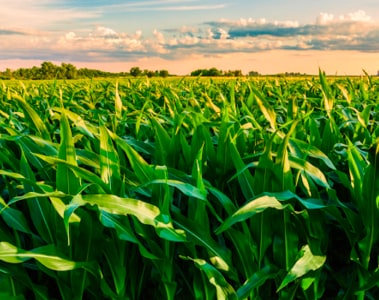
Up Close and Personal: Tara Bergstrom
18 Nov 2024
In the livestock industry, effective nutrition is essential for maintaining animal health and optimizing productivity. Dispersible Liquid Concentrates (DLCs), developed by dsm-firmenich, represent an innovative approach to delivering key nutrients, such as vitamins A, D3, and E, to cattle. These vitamins play crucial roles as metabolic cofactors, supporting essential functions such as immune response, growth, and reproductive health (Combs, 2007; McDowell, 2000). Studies have shown that vitamin supplementation significantly enhances antioxidant capacity and strengthens immune function in livestock (Mattioli et al., 2020). This article explores the advantages of DLCs over traditional dry vitamin forms, emphasizing their stability, bioavailability, and ease of incorporation into liquid feed systems.
Dispersible Liquid Concentrates (DLCs) are colloidal dispersions designed to enhance the stability and bioavailability of fat-soluble vitamins by mixing them with food-grade emulsifiers and solvents. These formulations ensure even distribution and consistent nutrient delivery when integrated into liquid feed systems. DLCs are specifically designed to be miscible with thixotropic liquids, which are substances that behave as viscous gels under static conditions but flow when subjected to agitation or stress (Barnes, 1997).
To optimize the product's performance across various feed systems, the formulation includes several key agents:
The liquid form ensures superior dispersibility and suspension properties, leading to more consistent nutrient delivery across different feeding regimes. This innovation sets a new benchmark for vitamin delivery in animal feed applications.
DLCs and dry vitamins differ significantly in their composition and application. For Vitamin A, DLCs utilize retinyl propionate and palmitate, providing a more stable product, while dry forms typically use retinyl acetate beadlets. In the case of Vitamin D3, although both forms utilize cholecalciferol, Rovimix DLCs offer a high-potency liquid variant that integrates seamlessly into liquid feeds. For Vitamin E, DLCs employ dl-alpha tocopheryl acetate, delivering a stable and bioavailable source comparable to dry forms.
DLCs are particularly effective in various feeding systems due to their versatility and ease of use. In micromachines, these automated systems dispense precise amounts of DLCs into feed rations, ensuring consistent nutrient delivery and reducing the risk of dosage errors. For free-choice liquid feeds, DLCs offer flexibility by allowing cattle to self-regulate nutrient intake, which is particularly advantageous in extensive feeding operations. Moreover, in concentrated liquid supplements, DLCs provide high-potency vitamins during critical growth or production phases, enhancing herd health and productivity.
A study comparing DLCs to dry vitamin forms in lambs demonstrated significantly higher serum retinol levels in the DLC group, indicating enhanced Vitamin A absorption. Lambs receiving the DLC diet exhibited serum retinol levels of 319 ng/ml, in contrast to 289 ng/ml observed in those fed dry vitamin forms. This increased bioavailability suggests that DLCs contribute to better growth performance and overall health in livestock, underlining their potential efficacy in enhancing nutritional strategies for cattle. (DLC vs. Dry Form Vitamin Bioavailability Study CSU, 2002 Dr. D. Johnson, H. Phetteplace).
Dispersible Liquid Concentrates (DLCs) are an advanced solution for delivering essential vitamins to cattle, offering significant advantages over traditional dry forms in terms of stability, bioavailability, and ease of use. Developed by dsm-firmenich, DLCs set a new standard for vitamin delivery systems in animal feed applications. Their robust nutrient delivery, compatibility with various feeding systems, and improved stability make DLCs an invaluable asset for modern ruminant nutrition. By utilizing DLCs, producers can enhance herd health and productivity, ultimately maximizing the efficiency of livestock operations.
Barnes, H. A. (1997). Thixotropy—a review. Journal of Non-Newtonian Fluid Mechanics, 70(1–2), 1–33. https://doi.org/10.1016/S0377-0257(97)00004-9
Combs, G. F. Jr. (2007). The vitamins (3rd ed.). New York, NY: Academic Press.
Mattioli, A. G., Diana, E. R., Esteban, T., Sebastián, J. P., Santiago, J. R., Antonio, H. H. M., & Luis, E. F. (2020). Effects of parenteral supplementation with minerals and vitamins on oxidative stress and humoral immune response of weaning calves. Animals, 10(8), 1298. https://doi.org/10.3390/ani10081298
McDowell, L. R. (2000). Vitamins in animal and human nutrition (2nd ed.). Ames, IA: Iowa State University Press.
21 October 2024

18 Nov 2024


We detected that you are visitng this page from United States. Therefore we are redirecting you to the localized version.